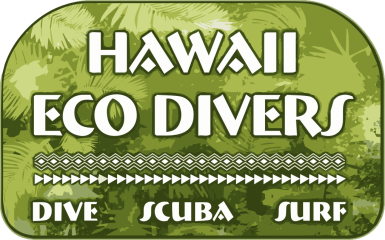DIVING WITH MONK SEALS IN HAWAII

My experience with Monk Seals
Have you ever wanted to go diving with monk seals? Whenever we’re lucky enough to see a monk seal on a dive, the whole group is so excited. The way they swim through the water with elegance in their big, shiny bodies always amazes a crowd. Amazingly, there is so much more to monk seals than just their beauty. The Hawaiian monk seal is endemic to Hawaii. You can’t find them anywhere else in the world. The ancient Hawaiian name for them is ‘Ilio holo I ka uaua, which means, “dog that runs in rough water”.
The threats they face:
They were hunted to the brink of extinction in the late 19th century and are now extremely endangered. Thirty percent of today’s Hawaiian monk seal population is alive because of NOAA, National Oceanic and Atmospheric Administration and their partners. The main threats Hawaiian monk seals face in the Northwestern Hawaiian Islands are maternal separation, malnutrition, predation, habitat loss and entanglement or ingestion of ocean trash. Those that live in the Main Hawaiian Islands face additional threats like toxoplasmosis and negative human interactions.
The Hawaiian monk seal population has been declining for over six decades. The current population numbers are only ⅓ of what they used to be. Limited food intake by juvenile seals is the biggest factor in their declining population. They must compete for food with large populations of jacks and sharks. Climate change has also contributed to food limitation. Entanglement is another threat to monk seals. They actually have one of the highest documented entanglement rates of any pinniped species. Pups and juveniles are often the most entangled. Human waste is a threat to sea animals everywhere.
Fun facts!
Monk seals weigh about 400 to 600 pounds and live to over 30 years. The seals usually sleep on the beaches, sometimes for days at a time. They generally hunt for food outside of the immediate shoreline areas in water 60 to 300 feet deep. However, they are known to even forage down to 1,000 feet on eels and other bottom dwelling organisms. They eat many types of fish, squid, octopus, eels, crabs, shrimp and lobsters. Diet studies show that they prefer prey that hide in the sand or under rocks.
These precious creatures are always such a joy to dive with. Learning about monk seals respecting the island both help protect them. If you’re hoping to go diving with monk seals, there’s no guarantee you’ll see one. I have though seen three at Electric Beach on the West Side. Dive with us and maybe we’ll spot one!
Best,
DMC Laura

